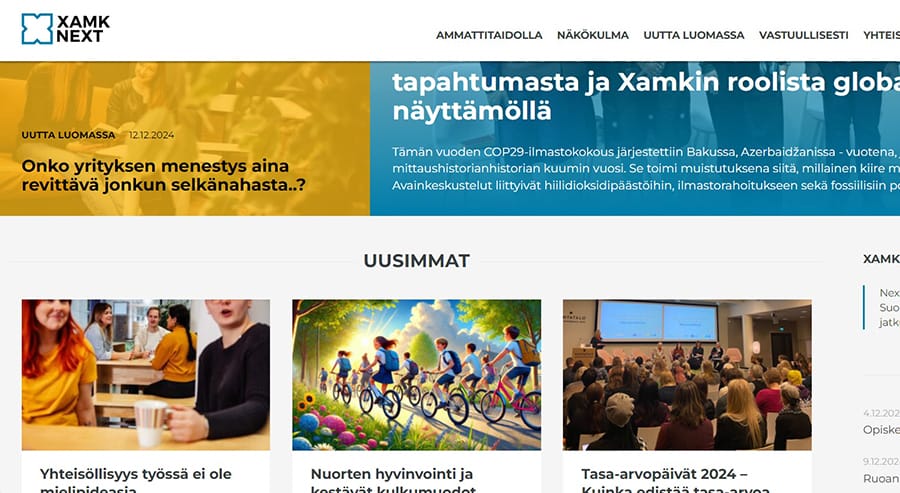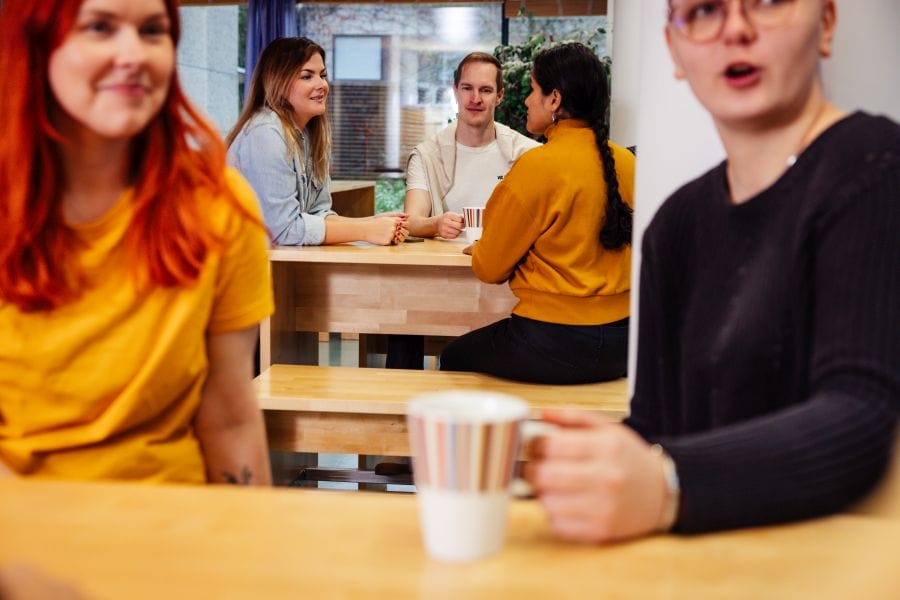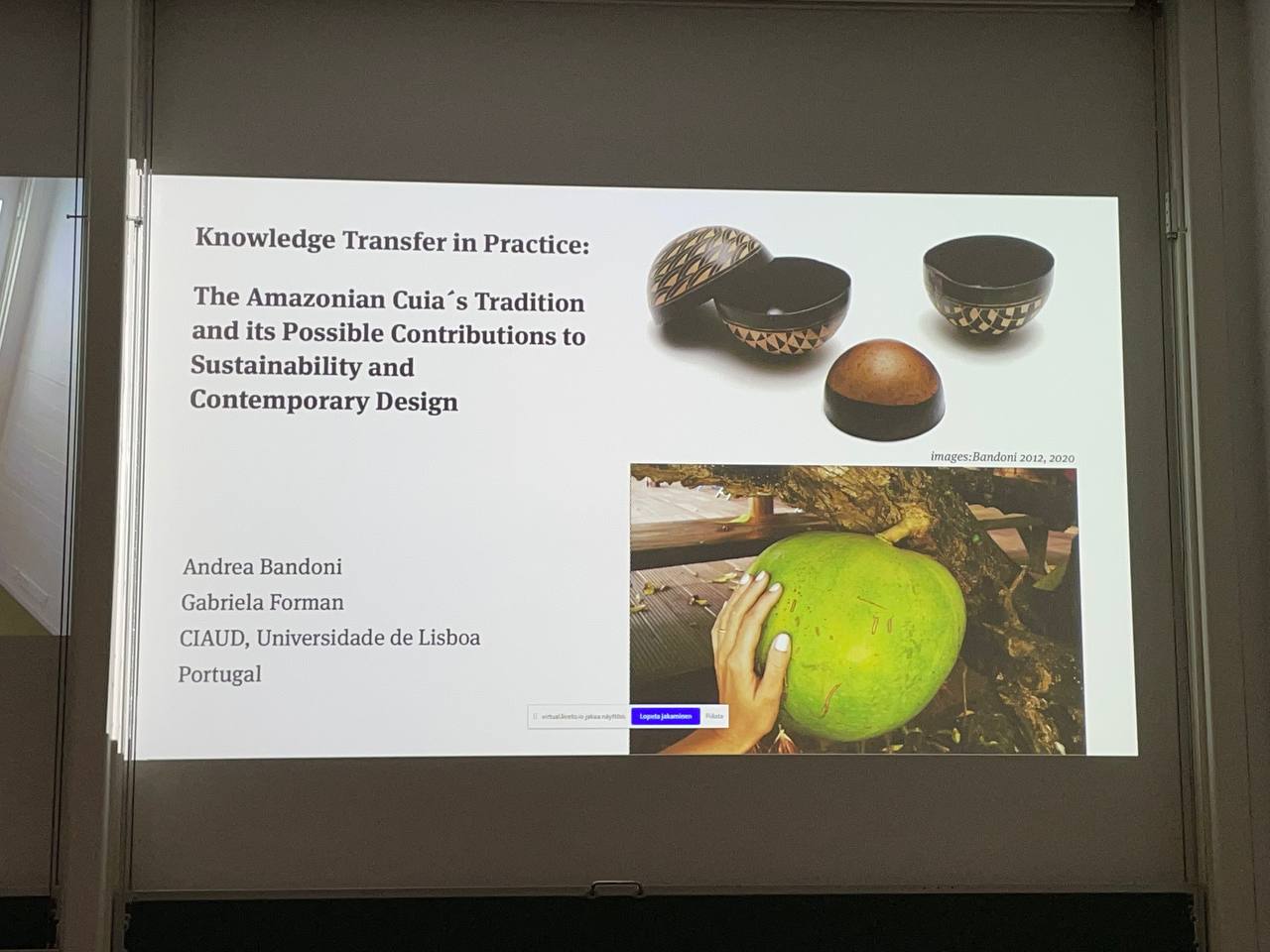The beautiful and the ugly: the insights from sustainability science days 2022
Let’s discover them together through the lenses of Xamk’s RDI-project Exporting expertise and know-how from South Savo project, that aims to foster cooperation and export, and Edufication, that creates new online learning experience.
This is a second part of a publication, make sure to check out «The Good, The Bad and The Urgent: The Insights from Sustainability Science Days 2022».
At Edufication we are thriving to contribute to Sustainable Development agenda through Education by providing high-quality online courses on the topics from climate change to self-development. Looking into the latest research helps us to understand the needs of the market and deliver timely educational solutions. Meanwhile, through Exporting expertise and know-how from South Savo project we also try to match the global, regional and local agendas to facilitate skills and information exchange from our region. Thus, the visit to Sustainability Science Days was full of insights.
The Ugly
Sustainable Development Agenda 2030 with its 17 guiding Goals and 169 targets surprisingly (or not) does not include the voices of indigenous communities. Meanwhile, comprising less than 5% of the world’s population and inhabiting just 20% of the land, indigenous people protect 80% of global biodiversity.
The ongoing research by Reetta Toivanen & Anna Varfolomeeva explores unfairness between social justice and sustainable development in Arctic areas. Sustainable Agenda 2030 is mostly realigned with western perspectives and science, while missing out on the experience of indigenous people, further deepening the existing inequalities.
For example, developing wind power in Arctic region promotes clean energy and climate change mitigation & adaptation. But does it consider the lifestyle of Sámi reindeer herders? Turns out, wind turbines damage reindeer migration routes and pose a risk to a human-landscape relations in the Arctic.
 Another illustration is plans for a new Arctic railway, that’s supposed to encourage sustainable transportation. The proposed route would divide eight individual reindeer owners’ associations into pieces, impacting reindeer management in extensive regions. That already leads to an uncertain outlook and hesitation by the new generation of Sámi people to choose reindeer management as their profession.
Another illustration is plans for a new Arctic railway, that’s supposed to encourage sustainable transportation. The proposed route would divide eight individual reindeer owners’ associations into pieces, impacting reindeer management in extensive regions. That already leads to an uncertain outlook and hesitation by the new generation of Sámi people to choose reindeer management as their profession.
The Beautiful
There is no conference on sustainability without hope. This year it was found through nature-based design presented through the research of Andrea Bandoni & Gabriela Forman on the Amazonian Cuia. Cuia are the skin of a fruit from Cuieira tree, and they serve as bowls/vessels for almost anything for local communities.
The Amazonian Cuia and the ways the local communities developed to utilize it can make a significant contribution to the sustainable design thinking:
- The timing. Cuia takes time and special conditions to grow. It does not grow during rainy season, making makers appreciate the cycle of time. Maybe we should not thrive to make everything hyper efficient but learn how to live with the current flow of time?
- Adapting and shaping fruits. Cuia is produced primarily as an object and not as a food. Local communities learnt to bend and shape it to the desirable form, which can inspire similar natural production of objects.
- The versatility of use. Cuias are functional as one is limited only by imagination on what to make out of it. This principle is really needed if we are to make other things of our daily life sustainable.
- The painting technique. Cuias are usually painted with plant paints and human urine. Utility of a by-product of another process is a good illustration of cradle-to-cradle approach that we urgently need to scale up.
- The resistance and decay. Cuias’ objects are durable but not permanent. It can teach us acceptance of decay at the end of the cycle, changing the mindset on how we see things.
To really guide us in sustainable transformation, we need to internalize the idea that we do not inherit the earth from our ancestors, we borrow it from our children.




